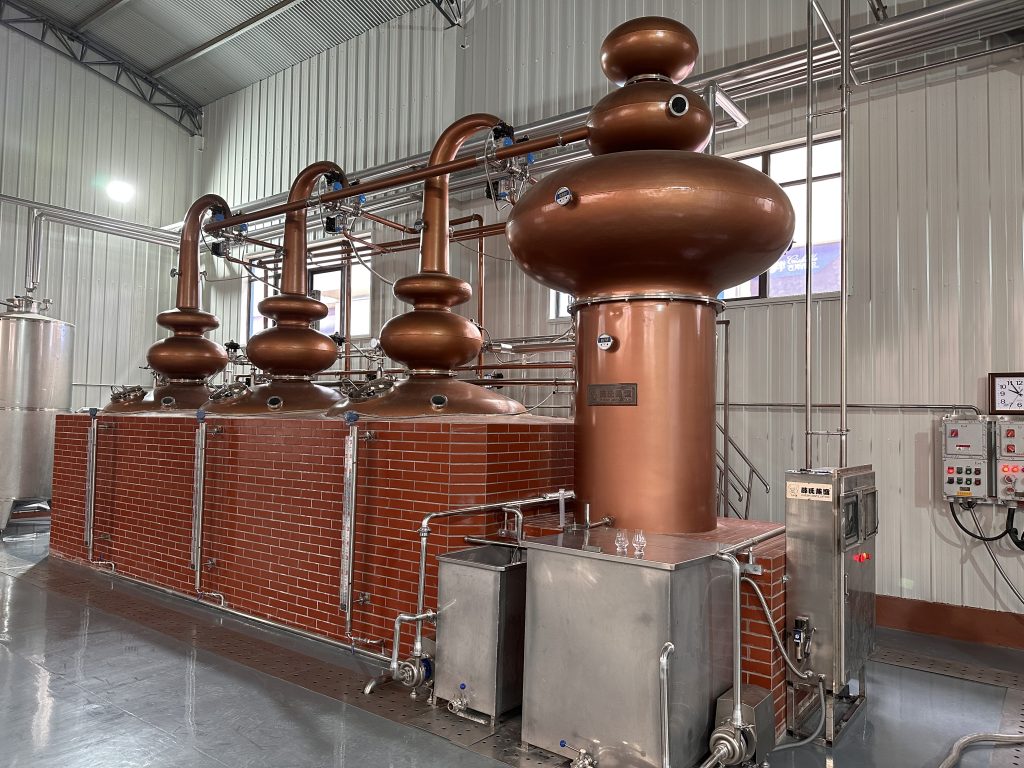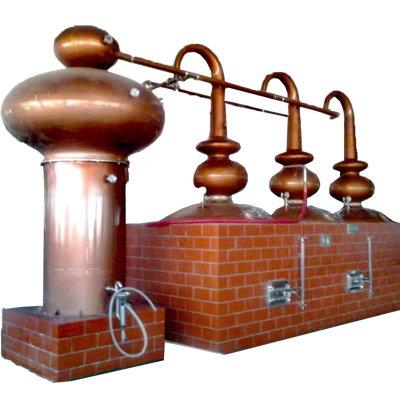To understand the energy efficiency of Xues’ Distiller, it’s important to first recognize that energy consumption in distillation primarily comes from two sources: the heat required to vaporize the volatile compounds in the base liquid, and the cooling water needed to condense the vapor back into liquid form.
Xues’ Distiller achieves significant energy savings through several innovative design features:

1. Heat Recycling:
Unlike traditional Charente pot stills, Xues’ Distiller doesn’t cool the tails from each batch. Instead, the hot tails are directly fed into the next still, mixing with the new batch of base liquid. This approach eliminates the need for two phase changes in the tails (gas to liquid, then liquid to gas again), saving substantial amounts of cooling water and heat energy.
2. Heat Exchange System:
The system utilizes the heat from the heart vapors to warm the incoming base liquid through a heat exchange process. This design further enhances energy efficiency by recycling heat that would otherwise be lost.
3. Optimized Distillation Flow:
Xues’ Distiller’s carefully designed multi-pot continuous distillation process maximizes heat utilization efficiency, minimizing energy waste.
These innovative designs and process optimizations result in:
1. Significantly Reduced Overall Energy Consumption:
Typically, Xues’ Distiller consumes only one-sixth of the energy required by traditional Charente stills of the same capacity, demonstrating remarkable energy efficiency.
2. Seasonal Energy Optimization:
During the grape wine distillation season (winter), with proper control, Xues’ Distiller can potentially operate without consuming any cooling water, further reducing resource usage.

It’s worth noting that while the energy required to heat the base liquid to a specific temperature is similar across different distillation methods, Xues’ Distiller’s innovations, particularly in heat recycling and utilization, achieve significant energy savings.
In conclusion, Xues Distiller, through clever heat management and recycling, substantially reduces energy consumption. This not only improves production efficiency but also contributes to sustainable development in the distilling industry.
